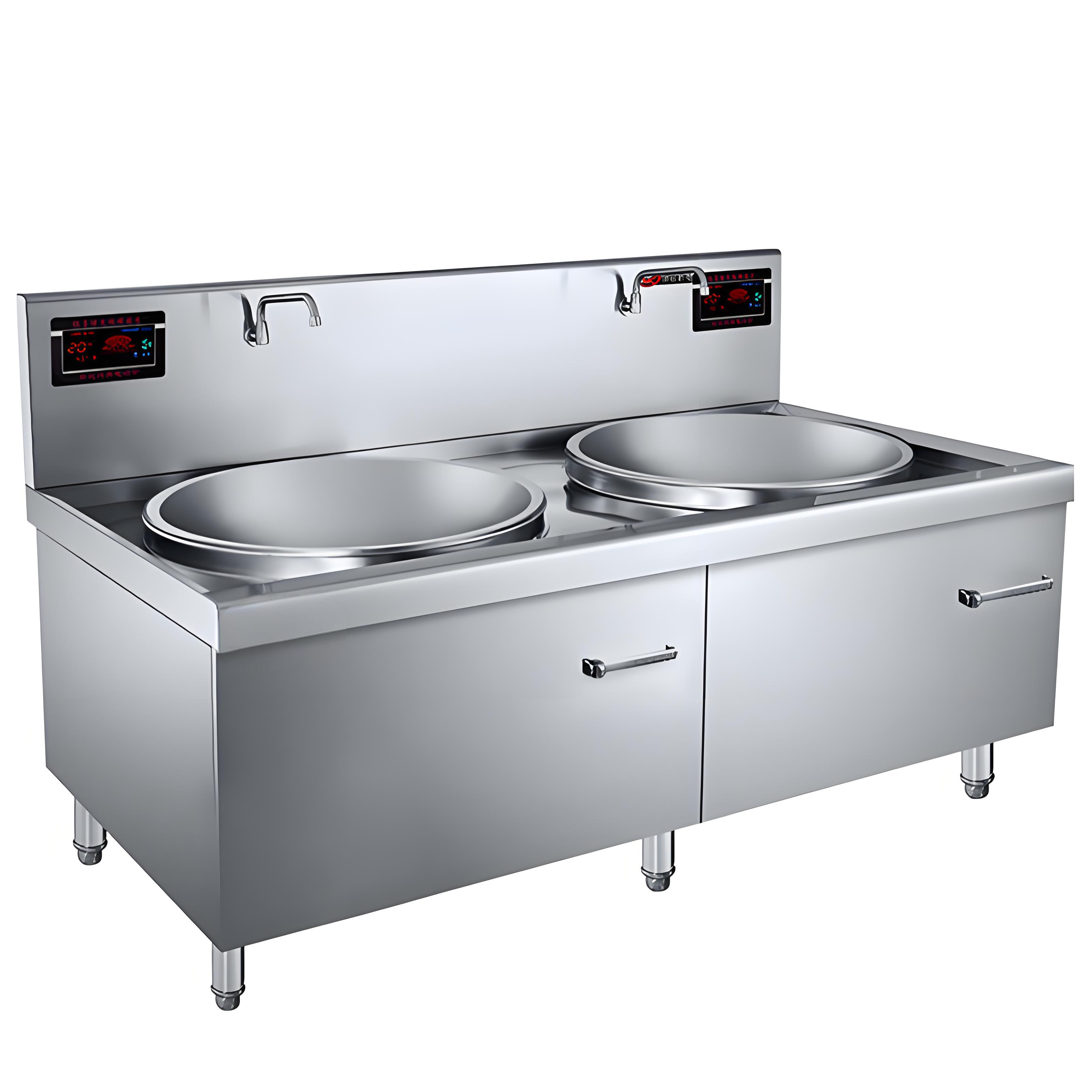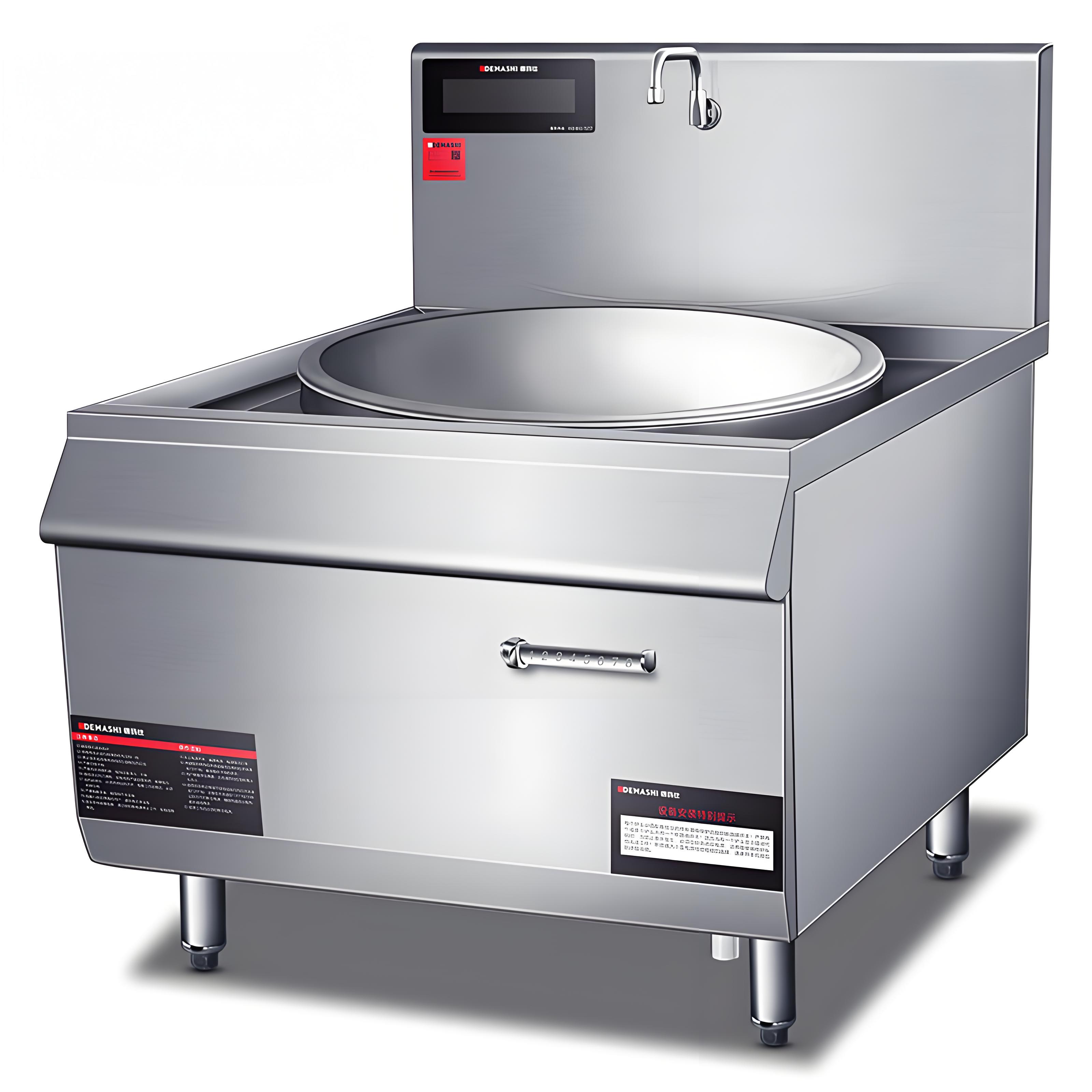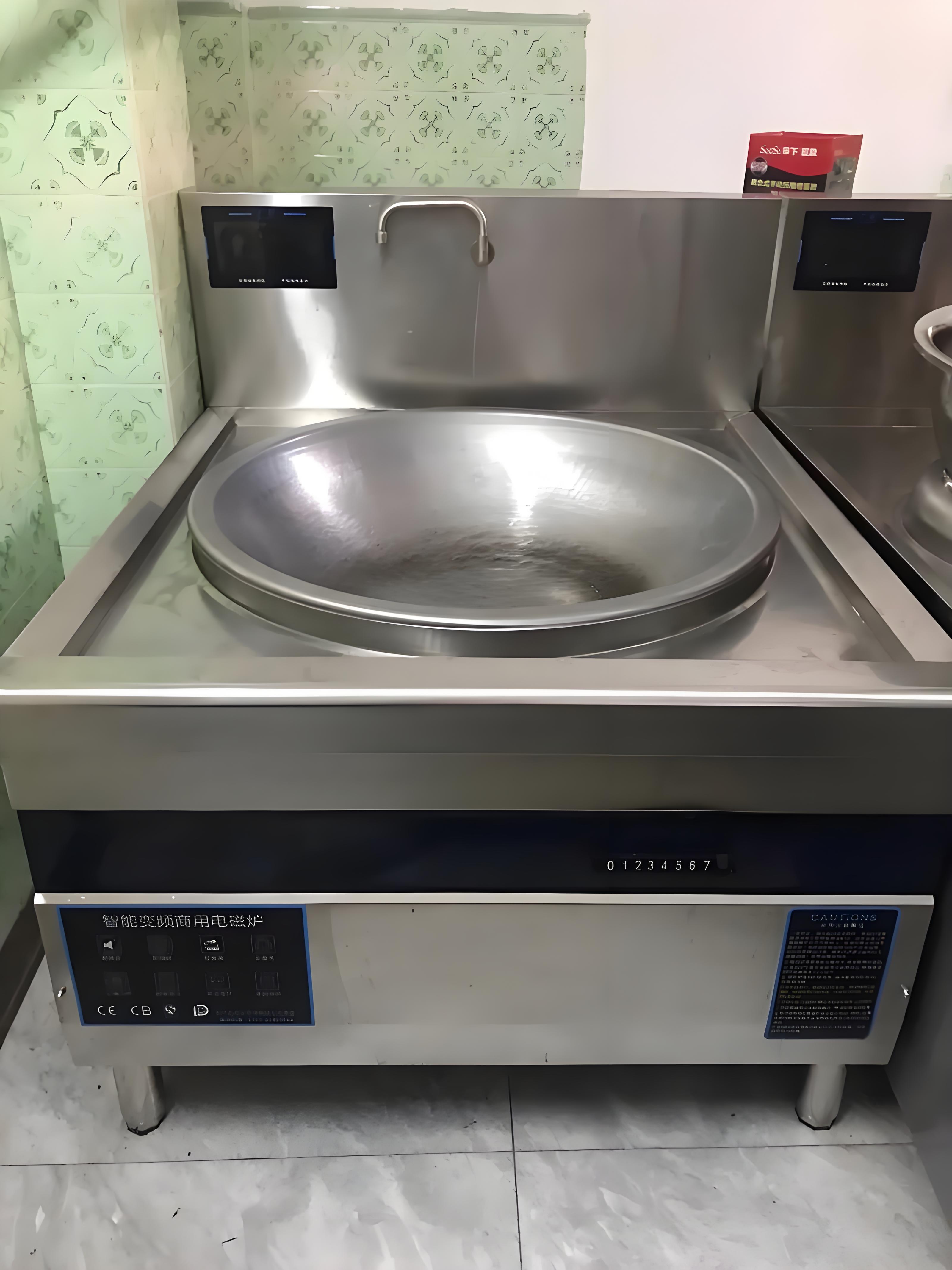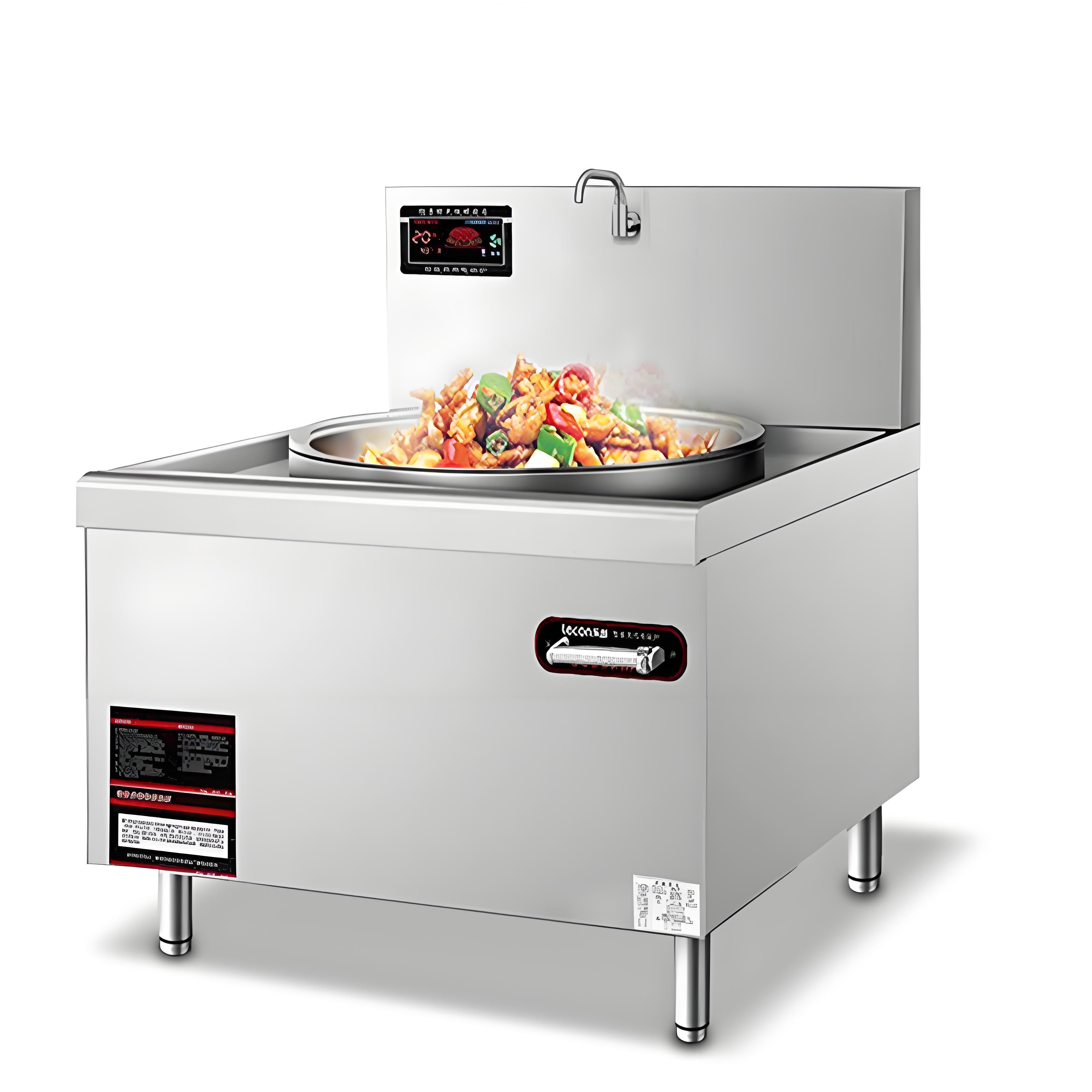As someone who’s spent years knee-deep in the catering equipment industry, I’ve had countless conversations with restaurant owners, chefs, and kitchen managers about one piece of equipment that’s become a game-changer: the commercial induction cooker. When people ask, “What types of commercial induction cookers are there?” they’re usually trying to figure out which one fits their kitchen’s unique needs. It’s not just about picking a shiny new appliance—it’s about finding a tool that boosts efficiency, saves energy, and keeps the food tasting amazing. In this article, I’ll walk you through the different types of commercial induction cookers, their features, and how they suit various kitchens, drawing from my own experiences and industry insights. Let’s get cooking!
1. Why Understanding Induction Cooker Types Matters
Before diving into the types, let’s talk about why this matters. Commercial induction cookers use electromagnetic fields to heat cookware directly, making them faster, safer, and more energy-efficient than traditional gas or electric stoves. But not all induction cookers are created equal. Choosing the wrong type can lead to mismatched power, wasted space, or even electrical headaches. I once helped a small cafe owner who bought a massive freestanding induction cooker, only to realize it overwhelmed their tiny kitchen and their single-phase power supply. A quick swap to a compact countertop model saved the day. Knowing the types available helps you avoid these costly missteps.
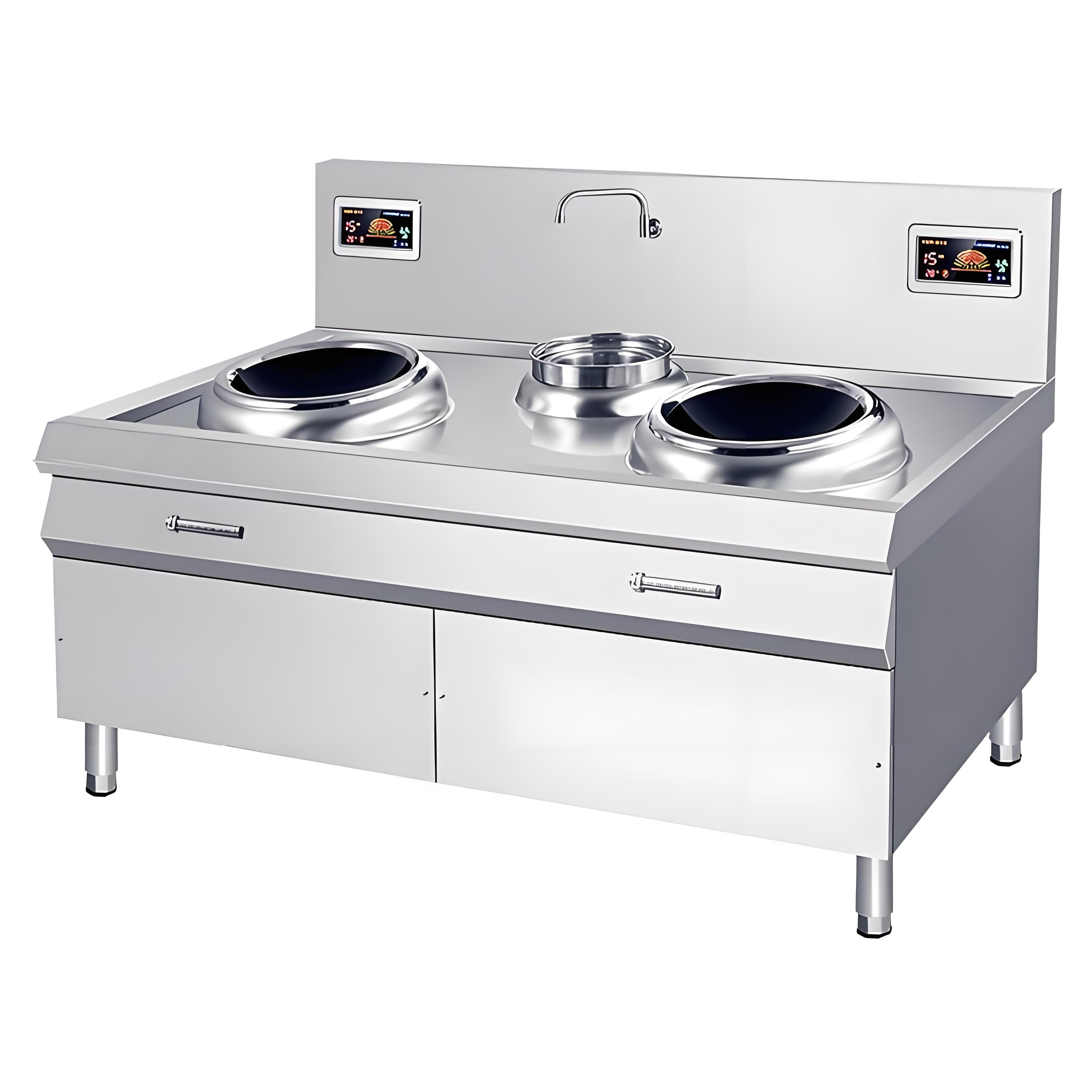
2. Main Types of Commercial Induction Cookers
Commercial induction cookers come in a variety of designs, each tailored to specific kitchen setups, cooking styles, and operational scales. Below, I’ve broken down the main types, their features, and their ideal use cases.
2.1 Countertop Single-Burner Induction Cookers
These are the compact workhorses of the induction world, designed to sit on a counter and handle one pot or pan at a time.
Power Range: 3kW to 8kW
Size: Small, typically 40x50cm or less
Features: Lightweight, portable, easy to install, often with digital controls and timers
Best For: Small cafes, food trucks, pop-up kitchens, or restaurants with light cooking needs (e.g., soups, sauces, or light frying)
Pros: Affordable (starting at $200), space-saving, works with single-phase 220V power
Cons: Limited to one dish at a time, not ideal for high-volume cooking
I’ve seen these shine in coffee shops where they’re used for simmering soups or heating milk. Their portability also makes them great for catering events.
2.2 Countertop Dual-Burner Induction Cookers
A step up, these models have two independent burners on a single countertop unit, allowing simultaneous cooking.
Power Range: 8kW to 15kW
Size: Medium, around 80x60cm
Features: Dual controls for each burner, smart temperature regulation, sometimes with preset cooking modes
Best For: Medium-sized restaurants, chain eateries, or kitchens needing to cook multiple dishes (e.g., stir-frying and simmering at once)
Pros: Balances capacity and space, handles moderate workloads, versatile for various cuisines
Cons: Requires more counter space and often three-phase 380V power for higher-end models
A noodle chain I worked with swore by these for their ability to boil broth on one burner while blanching noodles on the other, speeding up service during lunch rushes.
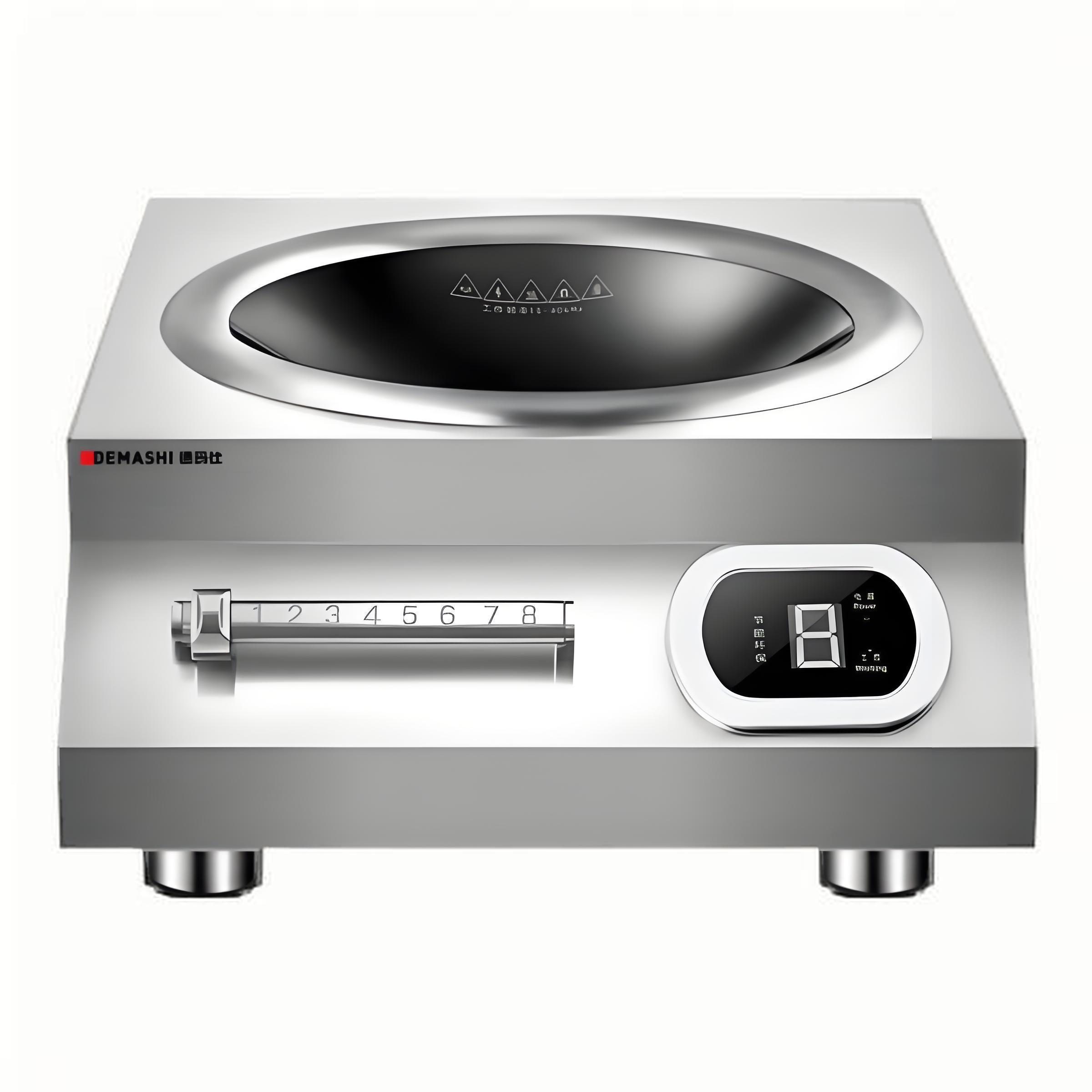
2.3 Freestanding Single-Burner Induction Cookers
These are heavy-duty, standalone units built for high-power cooking with large cookware.
Power Range: 15kW to 25kW
Size: Large, typically 100x80cm or more
Features: High power output, robust stainless steel frames, advanced cooling systems, often with smart controls
Best For: Large restaurants, hotel kitchens, or banquet halls needing fast, high-heat cooking (e.g., large-scale stir-frying or stewing)
Pros: Handles oversized pots, ideal for high-intensity cooking, durable for continuous use
Cons: Expensive ($2,000+), requires three-phase power and significant floor space
I recall a hotel kitchen that used these for banquet stir-fries, churning out dozens of dishes in minutes. Their power is unmatched for big operations.
2.4 Freestanding Multi-Burner Induction Cookers
The big guns of induction cookers, these units feature multiple burners (3-6) on a single freestanding frame, designed for maximum output.
Power Range: 20kW to 35kW
Size: Extra-large, often 150x100cm or more
Features: Multiple independent burners, advanced control panels, heavy-duty construction, sometimes with modular power settings
Best For: Central kitchens, factory canteens, or industrial food processing facilities
Pros: Massive cooking capacity, ideal for bulk production, efficient for large teams
Cons: High cost ($5,000+), complex installation, requires robust electrical infrastructure
These are common in university canteens, where they handle huge woks for stir-frying or steaming for hundreds of students at a time.
2.5 Specialty Induction Cookers
Some induction cookers are designed for niche purposes, offering unique features for specific cuisines or tasks.
Wok Induction Cookers: Feature a curved cooking surface for woks, with power from 5kW to 20kW. Ideal for Chinese restaurants specializing in stir-frying. They ensure even heating across the wok’s rounded base.
Planar Induction Griddles: Flat, wide surfaces for grilling or teppanyaki, typically 5kW to 15kW. Popular in Japanese or Korean BBQ restaurants.
Portable Induction Units: Ultra-light (2kW-5kW), used for front-of-house cooking demos or catering events. They’re less common but handy for mobile setups.
I once helped a teppanyaki restaurant install a planar griddle, and the chefs loved how it maintained consistent heat for theatrical grilling performances.
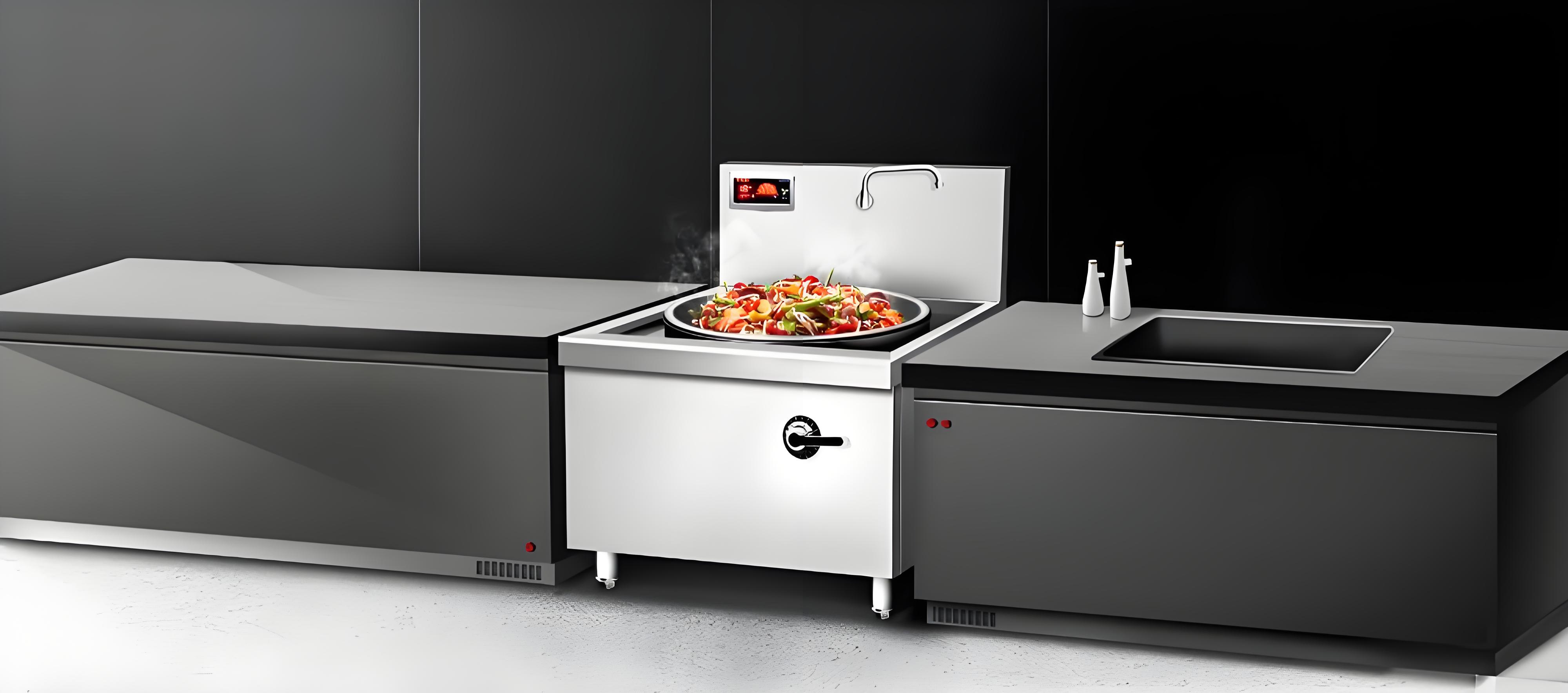
3. Comparison Table of Commercial Induction Cooker Types
To help you visualize the differences, here’s a detailed table comparing the types, their specs, and their applications:
|
Type |
Power Range |
Size |
Burners |
Electrical Needs |
Best For |
Price Range |
|---|---|---|---|---|---|---|
|
Countertop Single-Burner |
3kW – 8kW |
Compact (40x50cm) |
1 |
Single-phase 220V |
Small cafes, food trucks |
$200 – $800 |
|
Countertop Dual-Burner |
8kW – 15kW |
Medium (80x60cm) |
2 |
Single or three-phase |
Medium restaurants, chains |
$500 – $2,000 |
|
Freestanding Single-Burner |
15kW – 25kW |
Large (100x80cm) |
1 |
Three-phase 380V |
Large restaurants, hotels |
$2,000 – $4,000 |
|
Freestanding Multi-Burner |
20kW – 35kW |
Extra-large (150x100cm) |
3-6 |
Three-phase 380V |
Central kitchens, canteens |
$5,000 – $10,000 |
|
Wok Induction Cooker |
5kW – 20kW |
Varies (50x60cm to 100x80cm) |
1-2 |
Single or three-phase |
Chinese restaurants |
$500 – $3,000 |
|
Planar Induction Griddle |
5kW – 15kW |
Medium to large (60x60cm to 120x80cm) |
Flat surface |
Single or three-phase |
BBQ, teppanyaki restaurants |
$1,000 – $3,500 |
This table should make it easier to match a cooker type to your kitchen’s size, budget, and cooking demands.
4. How to Choose the Right Type for Your Kitchen
With so many types, how do you pick the one that’s right for you? Here’s a practical guide based on my years of helping clients:
4.1 Match the Type to Your Cuisine
Chinese or Asian cuisines: Wok induction cookers or freestanding single-burner units (12kW+) for high-heat stir-frying.
Western or light cuisines: Countertop single-burner (3kW-5kW) for soups, sauces, or frying.
BBQ or performance cooking: Planar griddles for grilling or teppanyaki.
Bulk cooking: Freestanding multi-burner units for stews, steaming, or large-scale production.
4.2 Consider Kitchen Size and Layout
Measure your available space. Countertop models fit small kitchens, while freestanding units need dedicated floor space. Ensure 10cm clearance around the unit for ventilation to prevent overheating.
4.3 Check Electrical Compatibility
High-power models (15kW+) require three-phase 380V power and thick cables (10mm² or more). Smaller units (up to 5kW) work with single-phase 220V. I’ve seen kitchens stall because owners overlooked this—don’t skip an electrician’s assessment.

4.4 Evaluate Cooking Volume
Low volume (50-100 customers/day): Countertop single-burner or dual-burner.
Medium volume (100-200 customers/day): Countertop dual-burner or freestanding single-burner.
High volume (200+ customers/day): Freestanding single- or multi-burner.
4.5 Budget and Operating Costs
Prices range from $200 for basic countertop models to $10,000 for multi-burner giants. Factor in electricity costs—a 20kW cooker running 8 hours at $0.15/kWh costs $24/day, while a 5kW model costs $6/day. Choose a type that balances upfront and long-term costs.
4.6 Look for Durability and Features
Opt for stainless steel construction, reinforced glass-ceramic surfaces, and smart features like temperature control or timers. These ensure longevity and ease of use in busy kitchens.
5. Real-World Examples
To bring this to life, here are two cases from my work:
Case 1: Food Truck
A food truck serving gourmet tacos needed a compact, portable solution for frying and simmering sauces. With limited space and single-phase power, I recommended a 3.5kW countertop single-burner cooker. It was affordable, fit perfectly, and handled their menu with ease. The owner loved its portability for moving between events.
Case 2: Large Chinese Restaurant
A 300-seat Chinese restaurant specializing in Sichuan cuisine needed high-power equipment for wok cooking. Their spacious kitchen had three-phase power, so we installed two 15kW wok induction cookers and one 20kW freestanding single-burner unit. The wok cookers delivered the intense heat needed for stir-frying, while the freestanding unit handled large stews, keeping the kitchen humming during peak hours.
These cases show how the right type depends on your specific setup.
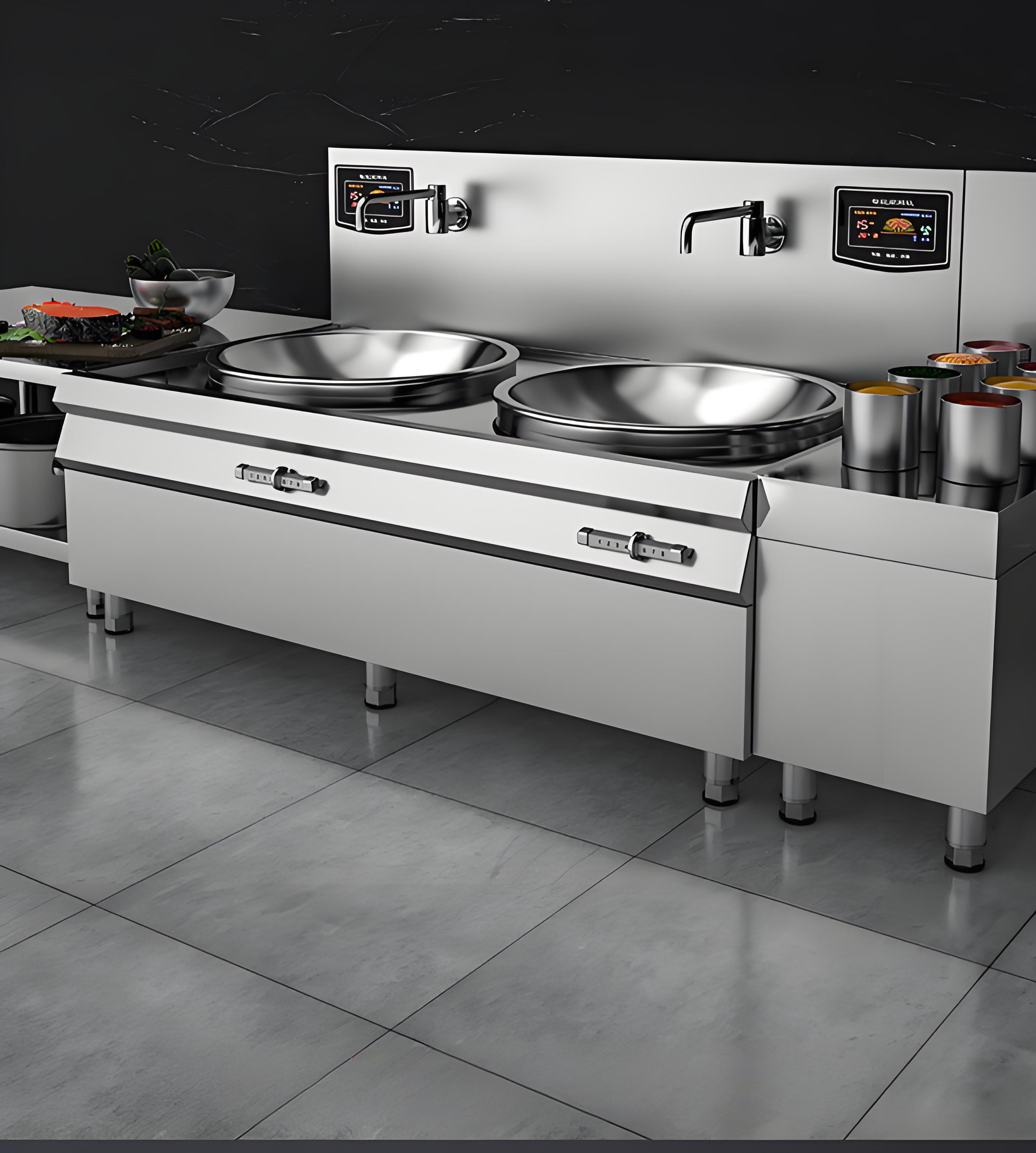
6. Common Misconceptions About Induction Cooker Types
I’ve seen plenty of myths trip up buyers. Here are a few to avoid:
“Bigger is always better”: A freestanding multi-burner unit is overkill for a small cafe, wasting space and money.
“All induction cookers work with any cookware”: Only ferromagnetic cookware (e.g., cast iron) works. Test with a magnet before buying.
“Power is the only factor”: Size, burner configuration, and features like cooling systems matter just as much.
“Cheap models are fine for commercial use”: Low-cost units often lack durability, leading to frequent breakdowns in busy kitchens.
7. Future Trends in Commercial Induction Cookers
The industry is innovating rapidly. According to a 2024 Catering Equipment Trends Report, here’s what’s coming:
Modular Designs: Cookers with interchangeable burner modules, allowing kitchens to scale up or down.
Smart Sensors: Units that detect cookware size and adjust power automatically, saving energy.
Eco-Friendly Integration: Models compatible with solar or battery systems, reducing electricity costs.
These advancements will make induction cookers even more versatile for restaurants of all sizes.
8. Frequently Asked Questions
To wrap up, here are answers to common questions about induction cooker types:
1. What’s the best type for a small restaurant?
Countertop single-burner (3kW-5kW) or dual-burner (8kW-12kW) models are ideal for small spaces and moderate cooking needs.
2. Do I need a special induction cooker for wok cooking?
Yes, wok induction cookers with curved surfaces ensure even heating for stir-frying, especially for Chinese cuisines.
3. Can I use a freestanding multi-burner cooker in a small kitchen?
Not recommended—they’re large and require three-phase power. Countertop models are better for small spaces.
4. Are specialty induction cookers worth it?
For specific cuisines (e.g., teppanyaki or wok-based dishes), specialty cookers like planar griddles or wok units are highly efficient and worth the investment.
5. How do I know if my kitchen’s power supply supports a high-power cooker?
Check with an electrician. Units above 15kW typically need three-phase 380V and 10mm² cables.
9. Final Words
Navigating the world of commercial induction cookers can feel like walking through a maze, but understanding the types—from compact countertop units to powerful multi-burner beasts—makes all the difference. Whether you’re running a food truck or a massive canteen, there’s a cooker out there that’s just right for your kitchen. My advice? Think about your menu, space, and budget, then test-drive a few models with a trusted supplier. A well-chosen induction cooker isn’t just equipment—it’s a partner in creating delicious meals and a thriving business.
Got more questions about induction cookers or need help narrowing down your options? Feel free to reach out. I’m always happy to share what I’ve learned from years in the industry. Here’s to a kitchen that sizzles with success!
